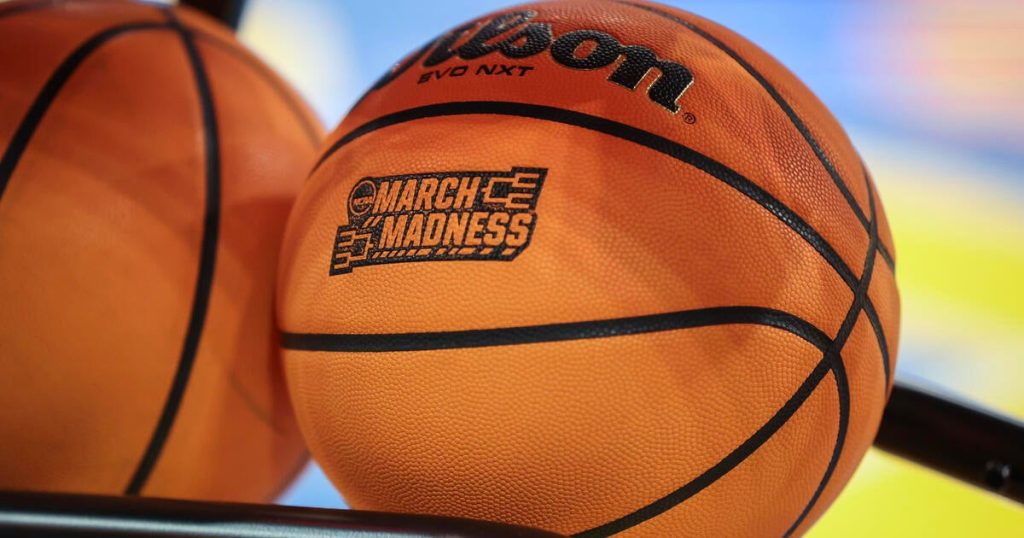Selection Sunday brought unexpected surprises and intense discussions as teams anxiously awaited their spots in the NCAA tournament bracket. North Carolina’s last-minute inclusion stirred controversy, prompting its athletic director to clarify the committee’s decision-making process, despite his position as chair. Meanwhile, Texas barely made the cut, contributing to a record-setting 14 teams from the Southeastern Conference (SEC), including the top-seeded Auburn, who have faced a recent slump. Coaches Rick Pitino and John Calipari are expected to draw significant attention as they prepare their teams for crucial matchups, intensifying the excitement surrounding this year’s March Madness.
| Article Subheadings |
|---|
| 1) Controversy Surrounding North Carolina’s Entry |
| 2) SEC Dominance Highlights Tournament Dynamics |
| 3) Coach Showdowns Set the Stage |
| 4) Challenges and Injuries Ahead of the Tournament |
| 5) Implications for Future Tournament Selections |
Controversy Surrounding North Carolina’s Entry
This year’s Selection Sunday was infused with a buzz of controversy particularly surrounding the inclusion of North Carolina in the tournament. A surprising 1-12 record against Quad 1 teams did not prevent them from being the last team selected, leading to skepticism from various analysts and fans regarding their spot in the bracket. North Carolina Athletic Director Bubba Cunningham emphasized in interviews that his role as chair of the selection committee did not influence the decision, explaining that many factors went into their choices. The committee accounted for North Carolina’s undefeated record against lower-ranked teams, which played a significant role in their selection.
SEC Dominance Highlights Tournament Dynamics
The Southeastern Conference (SEC) showcased its dominance with a record 14 teams making it to the NCAA tournament, the most of any conference. This feat not only underlines the competitive nature of the SEC but also raises important discussions about the strength of college basketball conferences. Bruce Pearl, the head coach of Auburn, who garnered the No. 1 seed despite three recent losses, noted the significance of SEC’s tough schedule that contributed to their selection. The SEC recorded an 88% win rate in nonconference matchups this season, further solidifying its status in college basketball.
Coach Showdowns Set the Stage
Amidst all the discussions, two coaching titans, Rick Pitino and John Calipari, are set to make headlines during the tournament. Pitino, who has led St. John’s into the tournament, returns to Providence where he led the Friars to their first Final Four appearance. His potential second-round matchup against Calipari, head coach of Arkansas, creates a tantalizing narrative. These matchups serve not only as key moments for their respective teams but also highlight the impressive feats of the coaches in navigating their programs through the ups and downs of the season.
Challenges and Injuries Ahead of the Tournament
As teams prepare for their tournament journeys, injuries present significant challenges. Jon Scheyer, the coach of Duke, expressed optimism about the return of star player Cooper Flagg, who missed two critical games. His training and readiness will be pivotal as Duke aims to advance past the first round. Similarly, T.J. Otzelberger announced a significant loss for Iowa State with senior guard Keshon Gilbert sidelined due to injury. These setbacks highlight the unpredictable nature of tournament play and emphasize the need for teams to adapt quickly as they face stiff competition.
Implications for Future Tournament Selections
The current selections have prompted discussions about the criteria used in choosing teams. With powerhouse programs like West Virginia and Indiana missing the tournament cutoff, there is growing scrutiny over whether the selection committee should reconsider its guidelines, particularly given the SEC’s massive representation. The situation raises essential questions on the need for tournament expansion and how teams from big conferences might increasingly dominate the field. The debate continues about the perceived fairness of the selection process and the inherent biases that may influence these decisions moving forward.
| No. | Key Points |
|---|---|
| 1 | North Carolina’s last-minute entry into the tournament raises questions about selection fairness. |
| 2 | The SEC dominates the tournament field with 14 teams, highlighting its competitive edge. |
| 3 | Key coaches like Rick Pitino and John Calipari prepare for monumental matchups. |
| 4 | Injuries pose significant challenges for Duke and Iowa State ahead of tournament games. |
| 5 | The selection process faces scrutiny amid debates on potential expansion and selection criteria. |
Summary
This year’s Selection Sunday was emblematic of the heightened drama and unpredictability of March Madness. The discussions surrounding the inclusivity and competitiveness of teams, particularly North Carolina’s controversial selection, reflect broader concerns within college basketball. As the field prepares for action, the excitement around coaching matchups, SEC dominance, and the challenges posed by injuries add layers of complexity to the tournament landscape. The unfolding events promise to engage millions of fans as they witness the drama of March unfold.
Frequently Asked Questions
Question: How does the selection committee determine which teams get into the tournament?
The selection committee evaluates teams based on various criteria, including overall win-loss records, strength of schedule, and performance in conference games, among other factors.
Question: What does it mean for a team to be a “bubble” team?
A “bubble” team is one that is on the cusp of being selected for the tournament but is uncertain due to its performance and standings relative to other teams vying for a spot.
Question: What challenges do teams face from injuries during the tournament?
Injuries can dramatically impact a team’s performance, as they may lose key players who contribute significantly to their success, forcing teams to adjust their strategies and rely on less experienced players.


